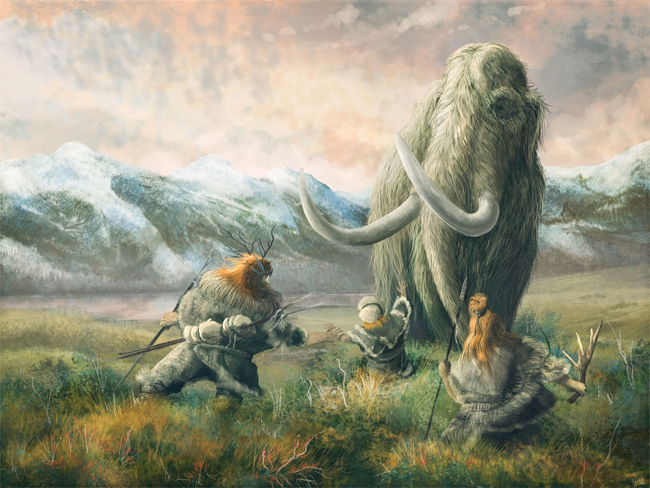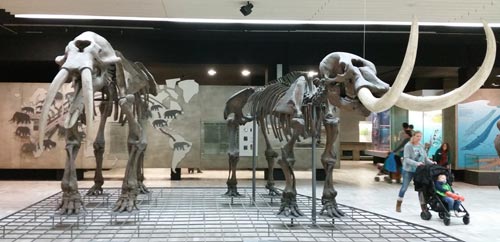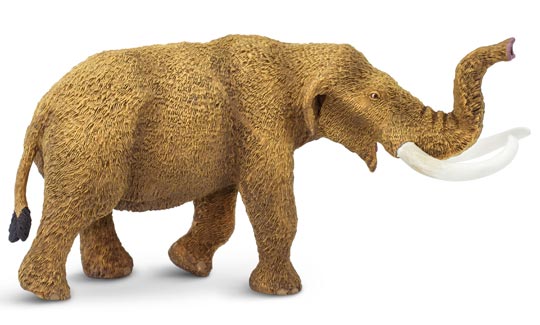The boom in the trade for mammoth tusks threatens extant elephant populations and their habitats. This is the conclusion of newly published research from the University of Portsmouth.
Conservationists and campaigners fear an increase in the buying and selling of mammoth tusks poses a direct threat to elephants. The trade in “ice ivory” was banned in the UK in 2018. The ban was imposed following a Portsmouth University led investigation into the British antiques trade of the material.

The Trade in Mammoth Tusks
Earlier this year (2023), it was announced the Ivory Act would be extended to protect five more endangered CITES-listed species, including the hippopotamus, narwhal, walrus, orca and sperm whale. However, new research highlights the unregulated sale of mammoth tusks needs to be addressed. The species fall outside of the regulation of the Convention on International Trade in Endangered Species of Wild Fauna and Flora (CITES). This is an international, multi-government agreement set up to ensure the survival of animals and plant species.
The authors argue that while woolly mammoths became extinct thousands of years ago, their lives and ultimate demise has much to teach us about how we conserve and protect existing elephant populations.

Picture credit: Everything Dinosaur
What About Other Prehistoric Elephant Genera?
Everything Dinosaur notes, that many species of extinct elephant had large tusks. Whilst the tusks eroding out of melting Siberian permafrost might usually be associated with the Woolly Mammoth (Mammuthus primigenius), tusks from other extinct species might be traded too. For example, tusks from the American Mastodon (Mammut americanum) or the Columbian mammoth (Mammuthus columbi) found in North America might also be bought and sold.

The picture (above) shows a model of the American Mastodon by Safari Ltd.
To view this range of prehistoric animal models and figures: Safari Ltd. Wild Safari Prehistoric World Models.
Prehistoric Elephant Tusks Labelled as Ivory from Extant Species
Lead author in the recently published paper, Dr Caroline Cox (University of Portsmouth) commented:
“There’s evidence traders are trying to sustain the illegal ivory market with mammoth tusks, by intentionally mislabelling ice ivory as elephant ivory. Modern elephants and woolly mammoths share a common ancestor, so their tusks have close similarities. Instead of profiting from these new discoveries, we should be learning from them – how mammoths lived and how they died – to help protect their endangered relatives.”
It is estimated the illegal wildlife trade to be collectively worth between $15-22.5 billion USD a year. This puts the trade on a par with the illegal arms trade, the illegal drugs trade and the trade in human trafficking.
Schreger Lines in Elephant Ivory
Co-author of the study, Luke Hauser (University of Portsmouth) explained:
“Structurally, mammoth ivory is fundamentally identical to elephant ivory. Both have Schreger lines, which are distinct characteristics of the species.”
The majority of the ivory coming out of Siberia is woolly mammoth, but because evolution is a slow process there would have been crossovers between their characteristics and their predecessors. In theory, a trader could have a document claiming a tusk is from a Steppe Mammoth (M. trogontherii) when in fact it is actually a Woolly Mammoth (M. primigenius). Conservationists could not argue otherwise without an expensive and lengthy DNA test.
It is more than a decade since eBay announced its own complete, worldwide ban on ivory sales. An on-line post stated that the global ban would “protect buyers and sellers, as well as animals in danger of extinction”. Unfortunately, recent studies have shown that sellers of illegal wildlife products operate on the dark web, rather than more openly through on-line social media and auction platforms.
The Trade in Mammoth Tusks Damages the Fossil Record
Dr Cox explained:
“While mammoth tusks continue to be in demand, particularly in the Far East, the Siberian tusk hunters of Yakutia recover only what the buyers want – the ivory. The remains of the mammoth are left behind and lost to science.”
The mining of mammoth tusks is dangerous. It is often illegal, and it damages the environment. The law of the Russian Federation states that only mammoth tusks that have come to the surface, usually as a result of the permafrost melting, can be harvested. However, this is extremely difficult to enforce. Miners can speed up the erosion process by using high pressure hoses to blast the permafrost. The industrial mining of the permafrost also releases huge amounts of greenhouse gases such as methane. This is leading to accelerated global warming.
The paper, published in the “Journal of International Wildlife Law and Policy”, states that the best and most effective way of tackling issues surrounding the “ice ivory” trade is international cooperation from nations sharing resources and intelligence.
Everything Dinosaur acknowledges the assistance of a media release from the University of Portsmouth in the compilation of this article.
The scientific paper: “Ice Ivory to White Gold: Links Between the Illegal Ivory Trade and the Trade in Geocultural Artifacts” by Caroline Cox and Luke Hauser published in the Journal of International Wildlife Law & Policy.
Visit the website of Everything Dinosaur: Everything Dinosaur.






Leave A Comment